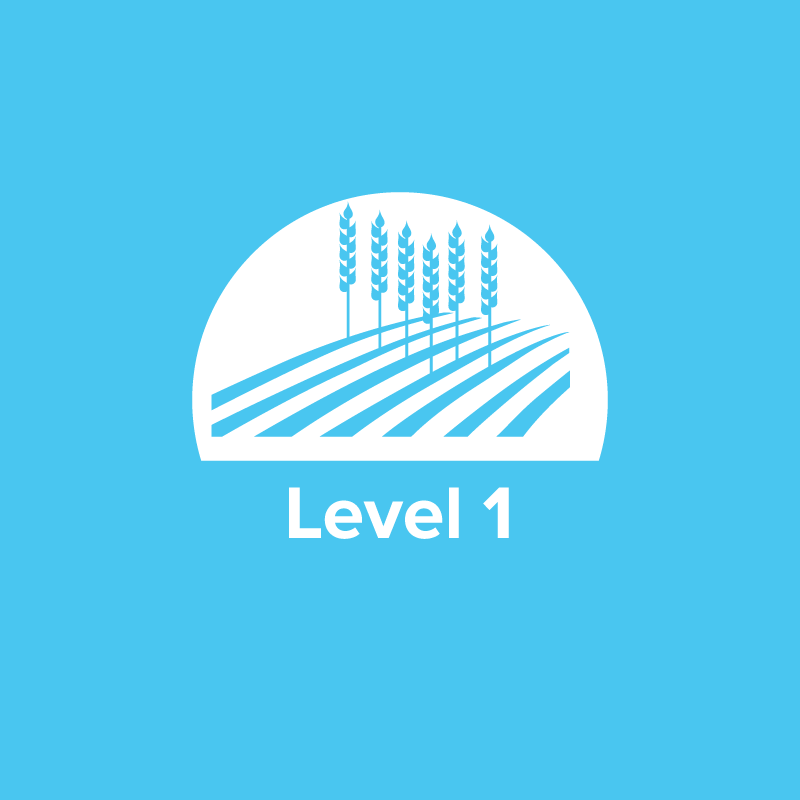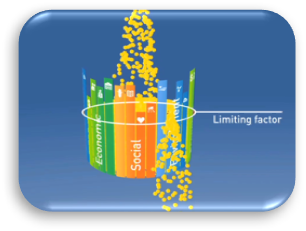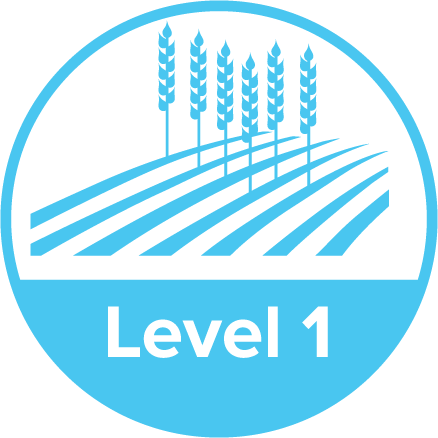Journey 2050 Lesson 1: Sustainable Agriculture (Grades 6-8)
Students will explore the core question, “How will we sustainably feed nearly 10 billion people by the year 2050?” as they discover what sustainable agriculture is and how it is critical to securing a stable food supply and future for a growing population.

Background
Lesson Activities
Recommended Companion Resources
Credits
Author
Lindsey Verhaeghe, Andrea Gardner, Debra Spielmaker, and Sara Hunt | National Center for Agricultural Literacy (NCAL) and Nutrien
Acknowledgements
The Journey 2050 program was originally developed by Nutrien in collaboration with Calgary Stampede, Alberta Canola Producers Commission, Nutrients for Life Foundation, and Agriculture in the Classroom Canada. Authors and contributors were drawn from each of these organizations under the direction of Lindsey Verhaeghe (Nutrien) and Robyn Kurbel (Calgary Stampede.) The lessons were updated and revised in 2017 and again in 2022 with contributions from the original J2050 Steering Committee, the National Center for Agricultural Literacy, and the National Agriculture in the Classroom Organization.
Sources
- http://www.economist.com/node/18200702
- Sustainable Development Network Solutions (2013). Solutions for Sustainable Agriculture and Food Systems http://unsdsn.org/mwg-internal/de5fs23hu73ds/progress?id=EHV3NQH3C4-PP-EivDwXY4i2HzIjIWty8lBnkNioco0,
- http://www.fao.org/mwg-internal/de5fs23hu73ds/progress?id=HXecPI0p3XpJtFbAsjLRZd3G4ZjPgUW5N3PqtZYwwio
- http://waterfortheworld.net/index.php?id=12
- http://www.un.org/sustainabledevelopment/sustainable-development-goals/
- Sustainable Development Network Solutions (2013). Solutions for Sustainable Agriculture and Food Systems http://unsdsn.org/mwg-internal/de5fs23hu73ds/progress?id=EHV3NQH3C4-PP-EivDwXY4i2HzIjIWty8lBnkNioco0,
- https://www.un.org/sustainabledevelopment/poverty/
- https://www.wfp.org/stories/5-facts-about-food-waste-and-hunger#:~:text=1, and http://www.un.org/waterforlifedecade/food_security.shtml
- https://irp-cdn.multiscreensite.com/be6d1d56/files/uploaded/TG07-Agriculture-Report-WEB.pdf
- http://www.economist.com/node/18200702
- http://www.worldfooddayusa.org/food_waste_the_facts
- http://www.un.org/en/globalissues/briefingpapers/population/vitalstats.shtml
- Sustainable Development Network Solutions (2013). Solutions for Sustainable Agriculture and Food Systems http://unsdsn.org/mwg-internal/de5fs23hu73ds/progress?id=EHV3NQH3C4-PP-EivDwXY4i2HzIjIWty8lBnkNioco0
Standards
National Content Area Standards
- Career & Technical Education
- AFNR (Grades 6-8): Natural Resource Systems Career Pathway
- NRS.02.02: Assess the impact of human activities on the availability of natural resources.
- NRS.03.01: Sustainably produce, harvest, process and use natural resource products (e.g., forest products, wildlife, minerals, fossil fuels, shale oil, alternative energy, recreation, aquatic species, etc.).
- AFNR (Grades 6-8): Environmental Service Systems Career Pathway
- ESS.02.03: Examine and summarize the impact of public perceptions and social movements on the regulation of environmental service systems.
- AFNR (Grades 6-8): Natural Resource Systems Career Pathway
- Social Studies – Economics
- Economics Standard 1 (Grades 6-8): Scarcity
- Objective (Grades 6-8): Identify what they gain and what they give up when they make choices.
- Economics Standard 2 (Grades 6-8): Decision Making
- Objective (Grades 6-8): Make effective decisions as consumers, producers, savers, investors, and citizens.
- Economics Standard 15 (Grades 6-8): Economic Growth
- Objective (Grades 6-8): Predict the consequences of investment decisions made by individuals, businesses, and governments.
- Economics Standard 1 (Grades 6-8): Scarcity
- Social Studies – History
- NCSS 3 (Grades 6-8): People, Places, and Environments
- Objective 7: Human modifications of the environment.
- NCSS 7 (Grades 6-8): Production, Distribution, and Consumption
- Objective 1: Individuals, government, and society experience scarcity because human wants and needs exceed what can be produced from available resources.
- NCSS 8 (Grades 6-8): Science, Technology, and Society
- Objective 2: Society often turns to science and technology to solve problems.
- Objective 4: Science and technology have had both positive and negative impacts upon individuals, societies, and the environment in the past and present.
- NCSS 3 (Grades 6-8): People, Places, and Environments
- Science
- MS-ESS3: Earth and Human Activity
- MS-ESS3-3: Apply scientific principles to design a method for monitoring and minimizing a human impact on the environment.
- MS-ESS3-4: Construct an argument supported by evidence for how increases in human population and per-capita consumption of natural resources impact Earth’s systems.
- MS-ESS3: Earth and Human Activity
 The economic component of sustainability is about earning money—creating jobs and incomes to support the national and local community. The social element encompasses things like food, education, medical care and infrastructure, including the roads used to transport food from the farm to your plate. And finally, there are environmental needs to consider. Soil quality needs to be maintained, habitats need protection, water must be conserved, and we need to protect our atmosphere by keeping greenhouse gas emissions to a minimum.
The economic component of sustainability is about earning money—creating jobs and incomes to support the national and local community. The social element encompasses things like food, education, medical care and infrastructure, including the roads used to transport food from the farm to your plate. And finally, there are environmental needs to consider. Soil quality needs to be maintained, habitats need protection, water must be conserved, and we need to protect our atmosphere by keeping greenhouse gas emissions to a minimum.